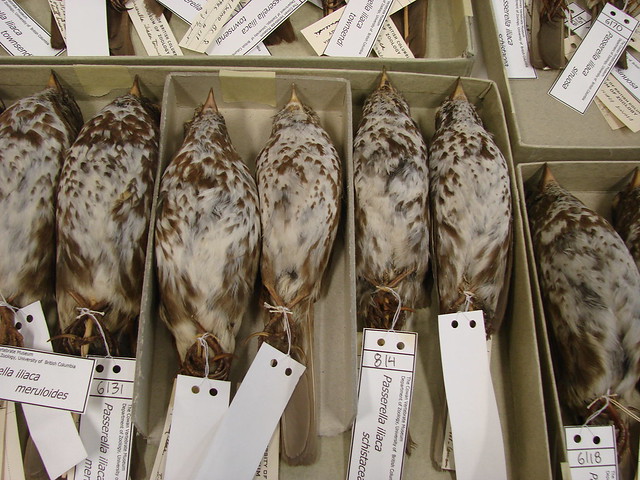Let’s hope not.
Natural history collecting and collections are under attack. Funding cuts, scientific fashion, and the ignorant and misguided activism of the ducky-and-bunny crowd have left too many museums in a sorry state indeed, unable to carry out even the most basic of their curatorial duties.
It’s heartening to hear voices raised now and again in defense of the natural history museum, which is, as an impassioned Op-Ed in this morning’s Times rightly reminds us,
particularly critical in today’s era of rapid ecological and climate change, providing a unique and vitally important glimpse into ecological conditions of the past.
Unfortunately, that essay depends entirely on the hackneyed metaphor of the museum as a “library of life”:
In the same way that students of the humanities use new critical approaches to pull novel ideas out of old books, scientists regularly use new technologies — like stable isotope analysis, high-throughput DNA sequencing and X-ray computed tomography — to draw new discoveries from sometimes centuries-old specimens.
The image is not only tired, it’s naive. It’s misleading.
It’s dangerous.
Think it through. If the museum is a library, then the museum specimen is a book — Lujan and Page tell us so expressly. But, again, think it through. No one wants, or no one should want, to subject natural history collections and the objects they contain to the same pressures under which today’s libraries labor.
Increasingly, economic and cultural forces have obliged even the greatest of libraries to treat the book as a fungible object, each copy of a text like any other. Already have a copy? You don’t need another. Available by interlibrary loan? You don’t need one at all. Digitized? Annex! Remote storage! RECAP! Library sale! Dumpster!
But books are not infinitely substitutable one for the other, as even the most superficially trained literary historian, critic, or historian of the book could tell you. Every edition, every printing, every copy might potentially reveal something different, something unexpected, something important.
If that is true of a library book, how much truer it is of the museum specimen. But if we admit, even assert, that museums are libraries, and specimens books, then we expose natural history collections and those who want to care for them to the same specious, and too often successful, arguments that have begun to lay waste to America’s libraries.
What good is having two Goliath bird-eating butterflies?
Why would you even need one if there’s a whole drawer of them in New York?
Why waste space on a bunch of old greasy skins when there are thousands, tens of thousands of photographs, videos, sound recordings, and 3D scans out there for the taking?
Most scientists and the thoughtful could answer these questions and cogently refute the assumptions behind them. But it isn’t usually scientists or the thoughtful making the decision. Keep on comparing natural history collections to libraries, and sooner or later — sooner, in fact — legislators, taxpayers, and university regents will make you live the metaphor.
And nobody should want that, least of all the researchers who use and need the specimens so gravely at risk.


